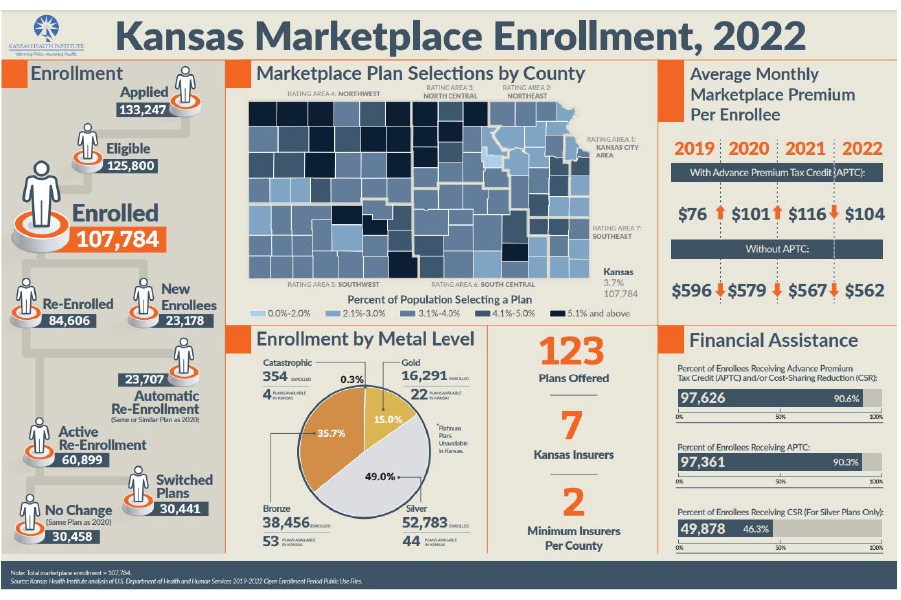Stand-Alone Dental Insurance
For the 2022 plan year, there were 16 stand-alone dental plans offered by five insurers on the Kansas marketplace, and 13,210 Kansans selected a standalone dental plan — a 6.9 percent increase compared to 2021.
Looking Ahead
The increase in enrollment in 2022 was widespread. Under ARPA, the tax subsidies that incentivized consumers to select a marketplace plan were scheduled to sunset at the end of 2022, and in March 2022 the Assistant Secretary for Planning and Evaluation estimated that of the 107,784 Kansans who enrolled during the 2022 OEP, 22,000 — or 20.4 percent — would disenroll and become uninsured. However, on August 16, 2022, President Biden signed the Inflation Reduction Act (IRA) of 2022, which extends the expanded subsidies provided under ARPA to January 1, 2026.
The Open Enrollment Period for the 2023 Plan Year began on November 1, 2022, and runs through January 15, 2023. It is possible that the number of Kansans who enroll for the 2023 plan year will remain steady or rise as those Kansans who took advantage of the ARPA-expanded subsidies in 2022 continue their enrollment, along with new enrollees who may have missed the opportunity in 2022 but may apply for the subsidies now provided in the IRA.






